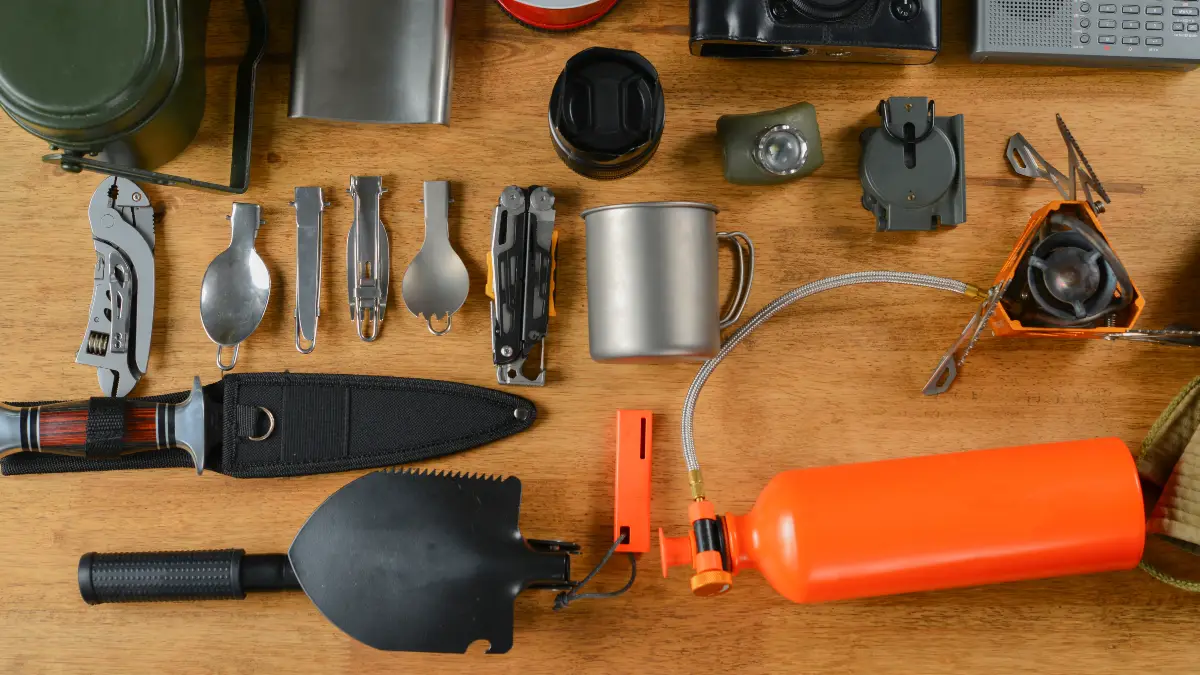When most people think of survival gear, they picture knives, tents, or water filters—but some of the most valuable tools cost less than a fast-food meal and don’t look like survival gear at all.
Preppers who know how to think outside the box can turn ordinary items into lifesavers. From plumbing keys that unlock hidden water sources to shiny “space blankets” designed by NASA, these budget-friendly tools prove that you don’t need to spend a fortune to be ready.
Here are 11 weird (but incredibly useful) prepper gear items you can grab for $15 or less.
1. 4-Way Silcock Key
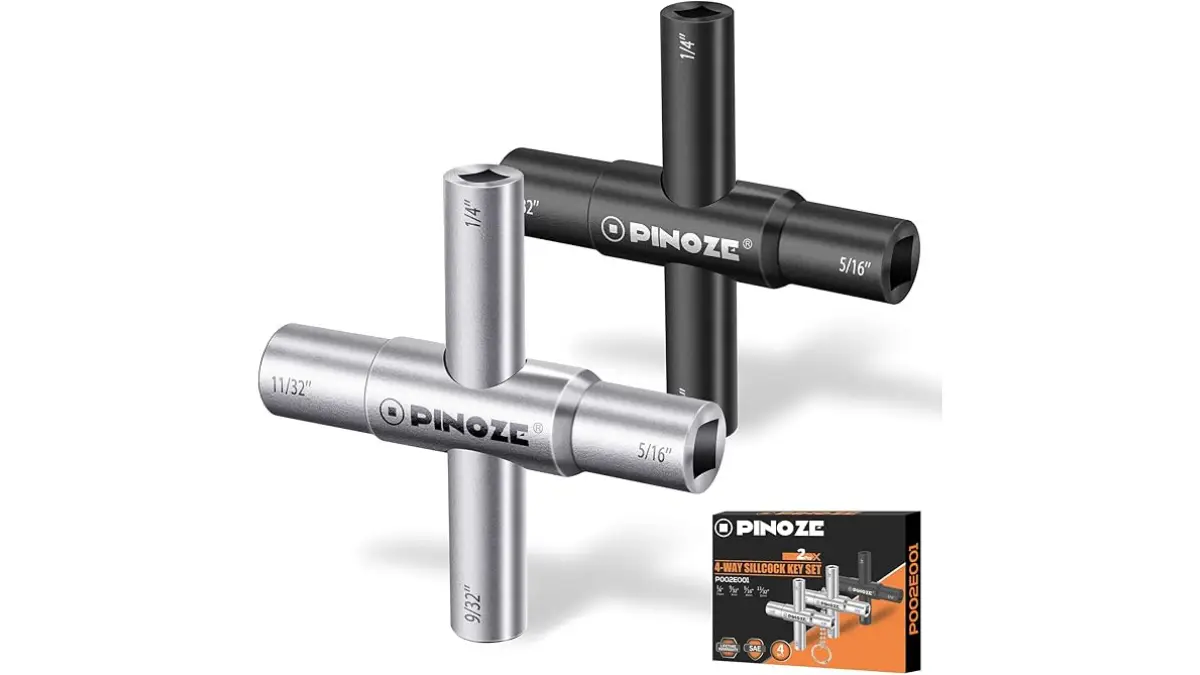
This small metal tool looks like a plus sign with different sized square holes. You can buy one on Amazon for $10 or at Home Depot for $12. It weighs less than your car keys.
Here’s why 99% of preppers don’t know about it: silcock keys aren’t marketed as survival gear. They’re plumbing tools. But firefighters and utility workers use them daily to access water from commercial buildings, and you can too.
During Hurricane Katrina, people with silcock keys accessed clean water from office buildings when home taps ran dry. In the 2021 Texas freeze, when residential pipes burst, these keys opened working commercial spigots. Every school, park, and office building has external water access. One key unlocks them all.
Walk around your neighborhood and count the commercial buildings. Each one has multiple water access points. In a typical square mile of any city, you’ll find 50+ water sources that a silcock key can open. Test it legally on public buildings during normal times. Combine with water purification tablets for complete water security. One $10 tool gives you access to more water than you could ever carry.
2. Mylar Emergency Blankets
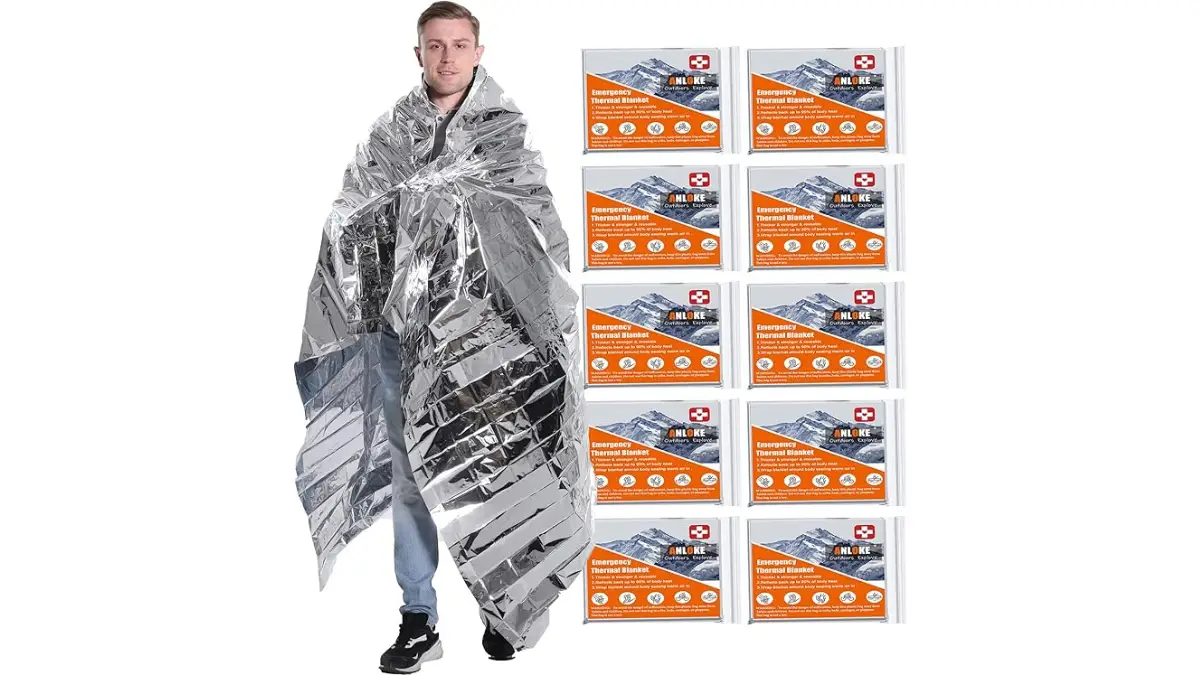
These look like giant sheets of tin foil. Walmart sells a 4-pack for $7.99. Amazon offers 12-packs for $12.95. Each blanket weighs 2 ounces and fits in your pocket.
People laugh at mylar blankets because they seem flimsy. They tear easily. They’re noisy. They look ridiculous. But NASA didn’t develop them for comfort—they developed them to save Apollo astronauts from freezing in space. And they work.
Scott from The Prepared forum shared this story: “My friend got hypothermic during a day hike. The Heat Sheets blanket likely saved her from a much more serious situation. A $7 blanket that takes up NO room saved her rear.” Emergency rooms nationwide use mylar under regular blankets for hypothermia patients. Search and rescue teams spot the reflection from 20+ miles away. You can even build a solar oven that reaches 200°F.
Never put mylar directly against skin—it doesn’t breathe. Open one before emergencies since they’re loud enough to wake the dead. The shiny side reflects heat; point it toward what you want to warm. Originally designed for the Apollo space missions, these sheets reflect 90% of radiant body heat.
3. Ferro Rod Fire Starter
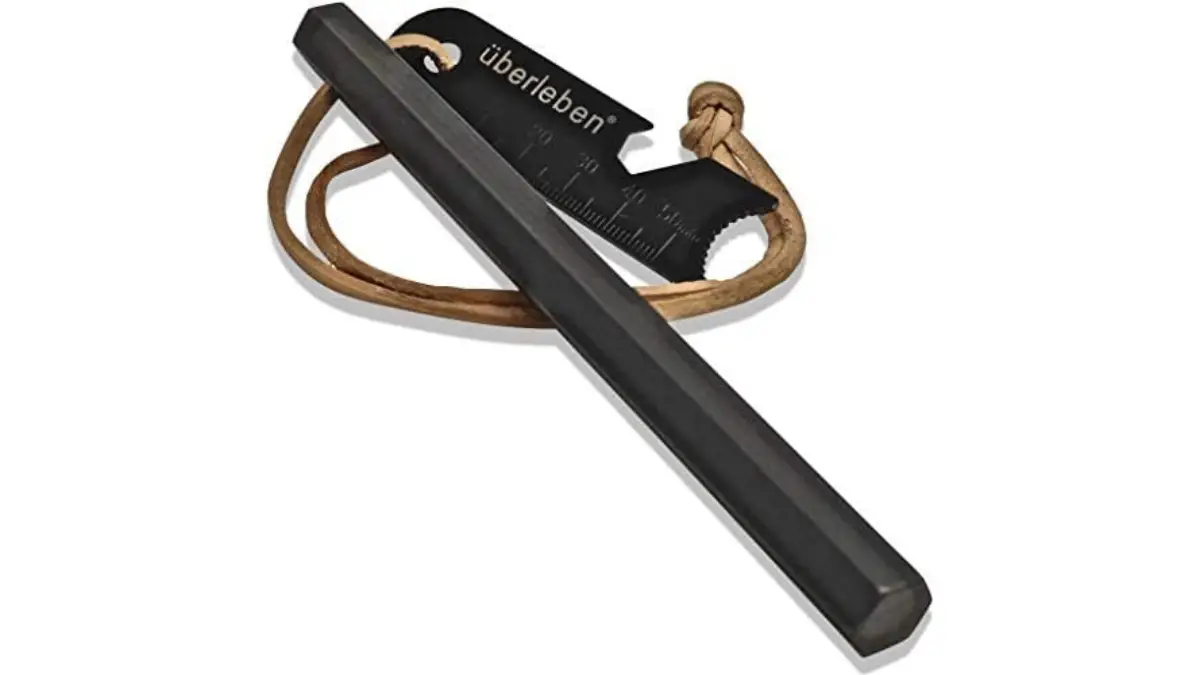
A ferro rod is a metal stick made from ferrocerium alloy. Scrape it with steel and it shoots sparks. Amazon sells quality ones from $6-13 depending on size. Each rod produces 10,000+ fires.
Matches get wet. Lighters run out of fuel. Batteries die. But ferro rods work when soaking wet, frozen solid, or after years of storage. The sparks burn at 5,500°F—hot enough to ignite almost anything flammable.
During winter storm power outages, ferro rods start fires when everything else fails. The military issues them as standard equipment. Survival instructor Creek Stewart calls them “the most reliable fire starter ever invented.” They work at high altitude where lighters fail. They work in wind that blows out matches.
Practice before you need it—there’s a learning curve. Make fire starters by coating cotton balls with petroleum jelly. Scrape the rod fast and firm at a 45-degree angle. According to TruePrepper testing, quality ferro rods are “virtually indestructible and will last a lifetime.”
4. Heavy-Duty Binder Clips
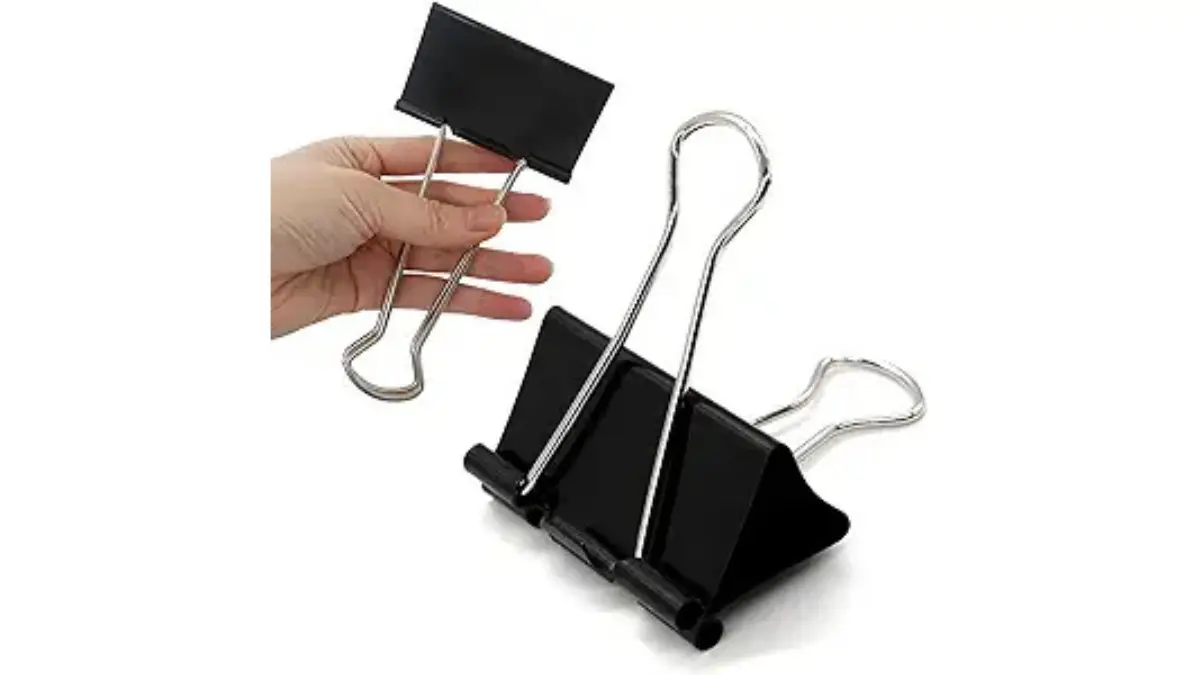
Large metal office clips. Nothing fancy. Dollar stores sell dozens for $2. Get the 2-inch size—bigger is better for survival use.
Nobody thinks “survival gear” when they see binder clips. They think “office supplies.” But survivalists have documented 15+ emergency uses for these metal clamps. They’re stronger than most specialized fasteners and heat-resistant enough to handle cooking tasks.
Use them to anchor tarps for emergency shelter—they grip better than grommets. Emergency medics sometimes use them as surgical clamps to stop bleeding. Clip them to pot edges as handles when yours break. Seal food bags airtight. Create clotheslines. Fix torn backpacks. Hold flashlights. Secure bandages. The uses never stop.
Buy the largest size you can find. The bigger ones handle more weight and grip thicker materials. Remove the metal handles and they store flat. Keep some in your car, your bag, your pocket. These simple clips are so useful that combat medics carry them as emergency surgical clamps.
5. Veterinary Self-Adhesive Tape
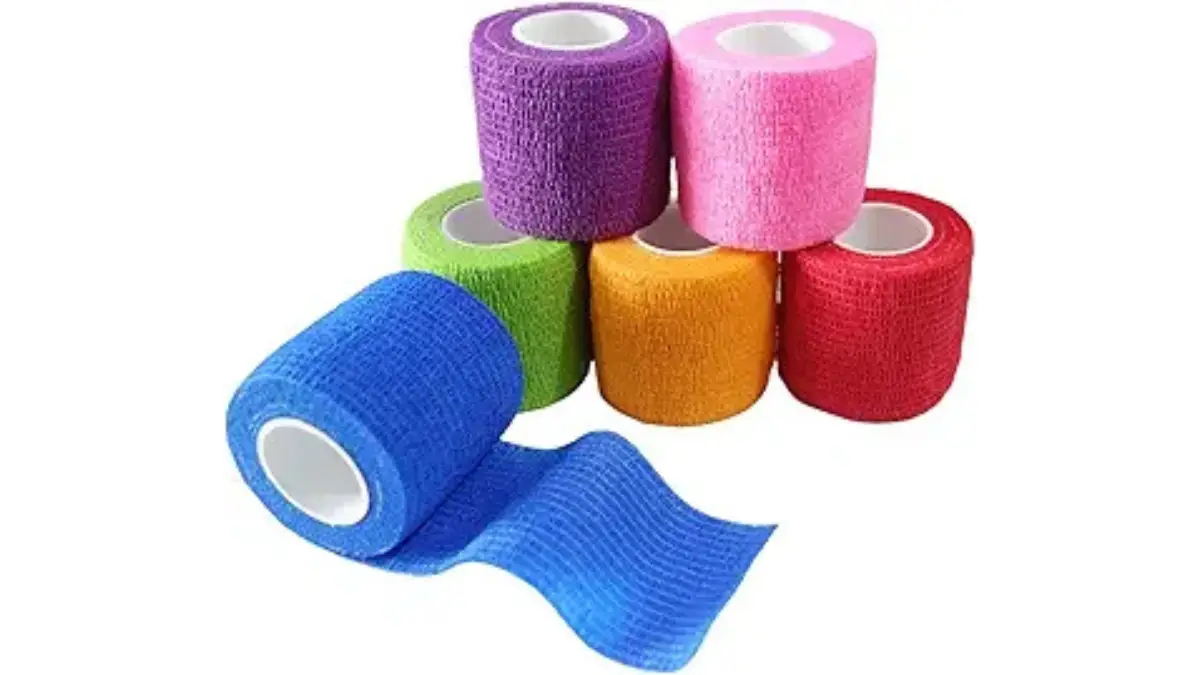
Also called “vet wrap,” this stretchy bandage sticks to itself but not to skin or hair. Farm supply stores sell it for $2 per roll. It comes in multiple colors.
Vets use this tape because animals can’t remove it easily, and it doesn’t rip out fur. Turns out those same features make it perfect for human emergencies. It’s actually superior to most human medical tape—waterproof, reusable, and incredibly strong.
Combat medics discovered vet wrap outperforms traditional medical tape for securing splints and pressure bandages. It stretches 100% for perfect compression on sprains. The tape maintains grip even when bloody or muddy. You can wrap tools for better grip, repair torn gear, or mark trails with bright colors.
Buy multiple colors to color-code medical supplies or mark different family members’ gear. The tape tears by hand—no scissors needed. Wrap it loose for support, tight for compression. Military combat medics now carry vet wrap as standard equipment because it outperforms human medical tape.
6. Dental Floss
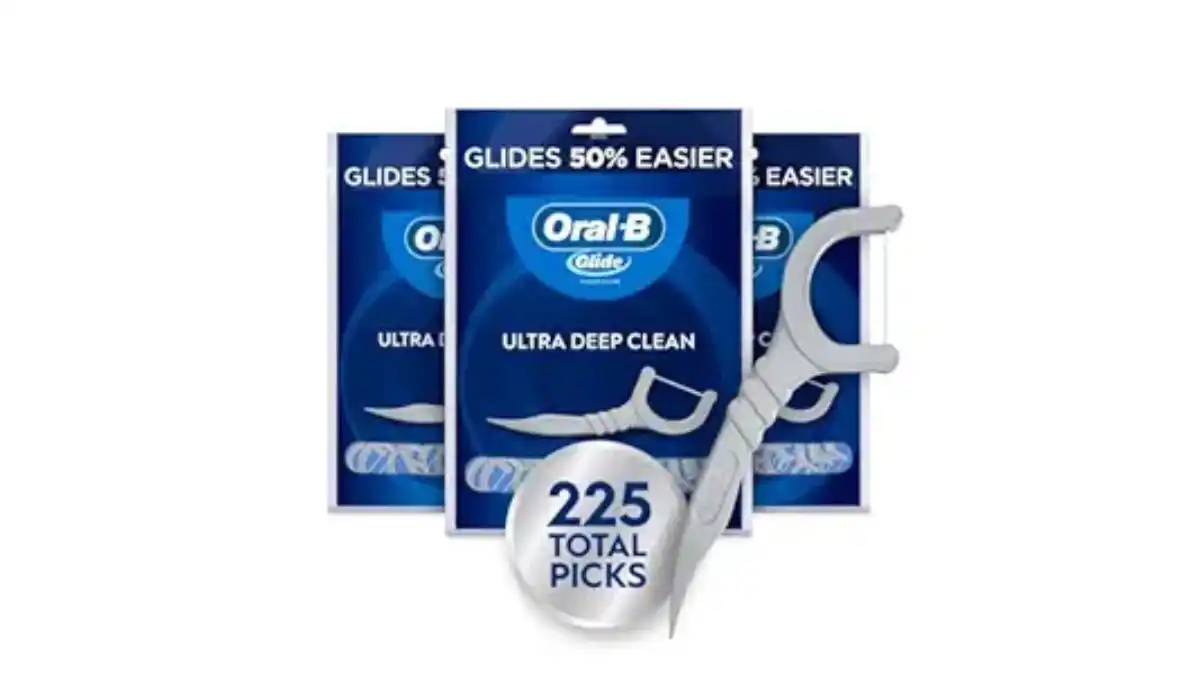
A 100-yard spool of waxed dental floss costs $3 at any store. That’s 300 feet of incredibly strong cord that fits in your pocket.
Dental floss sounds like the ultimate weird prep item. But outdoor survival experts have documented 17+ uses for it. The waxed nylon version is stronger than most fishing lines. It cuts through soft materials like plastic and foam. It’s nearly invisible, making it perfect for certain applications.
Use unwaxed floss as fire starter—it burns slowly and steadily. Create fishing lines strong enough for 5-pound fish. Lash together shelter frames. In extreme emergencies, medical professionals have used it for sutures. Build snares for small game. Slice cheese and soft foods. Tie gear to packs. The thread is thin enough to repair tears in fabric invisibly.
Skip mint flavoring if you plan to hunt or fish—animals smell it. Waxed versions resist water better but won’t take flame. Keep multiple spools since you’ll use it faster than expected. Testing shows dental floss can hold 25+ pounds of weight—stronger than many fishing lines.
7. Heavy-Duty Zip Ties
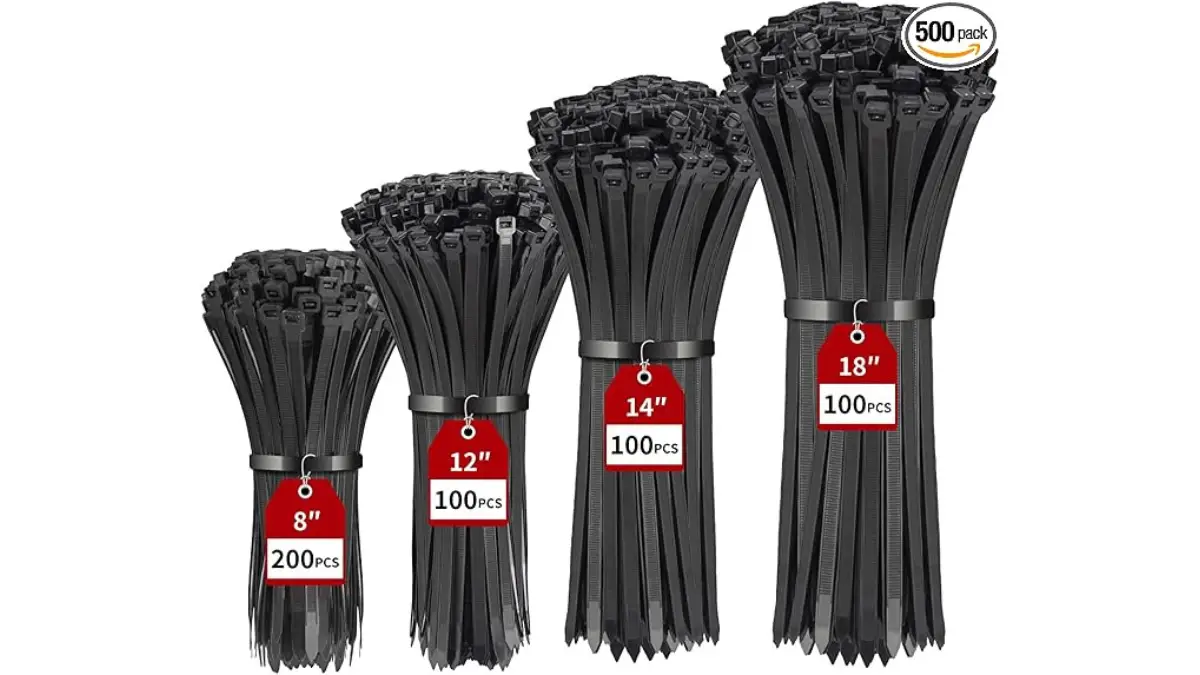
Industrial-grade cable ties rated for 175+ pounds. Walmart sells 100-packs for $8.99. Don’t buy the cheap thin ones—get the heavy-duty version.
Everyone knows zip ties hold cables. But survival experts have found 25+ emergency uses for them. Police and military use flex-cuff versions as restraints. Construction workers use them for temporary repairs that become permanent. They’re the duct tape of the fastener world.
Build emergency shelters by connecting tarps, poles, and branches. Create splints by securing sticks to broken limbs. Fix broken backpack straps, torn shoes, and damaged gear. Secure doors during home invasions. Attach gear to vehicles. Create ladder rungs. The applications seem endless because they are.
Buy black ones for outdoor use—UV resistance makes them last longer. Get various sizes for different jobs. You can daisy-chain them for extra length. They work in extreme cold and heat. Law enforcement and military units use specialized versions as emergency restraints that can hold 250+ pounds.
8. Aluminum Foil
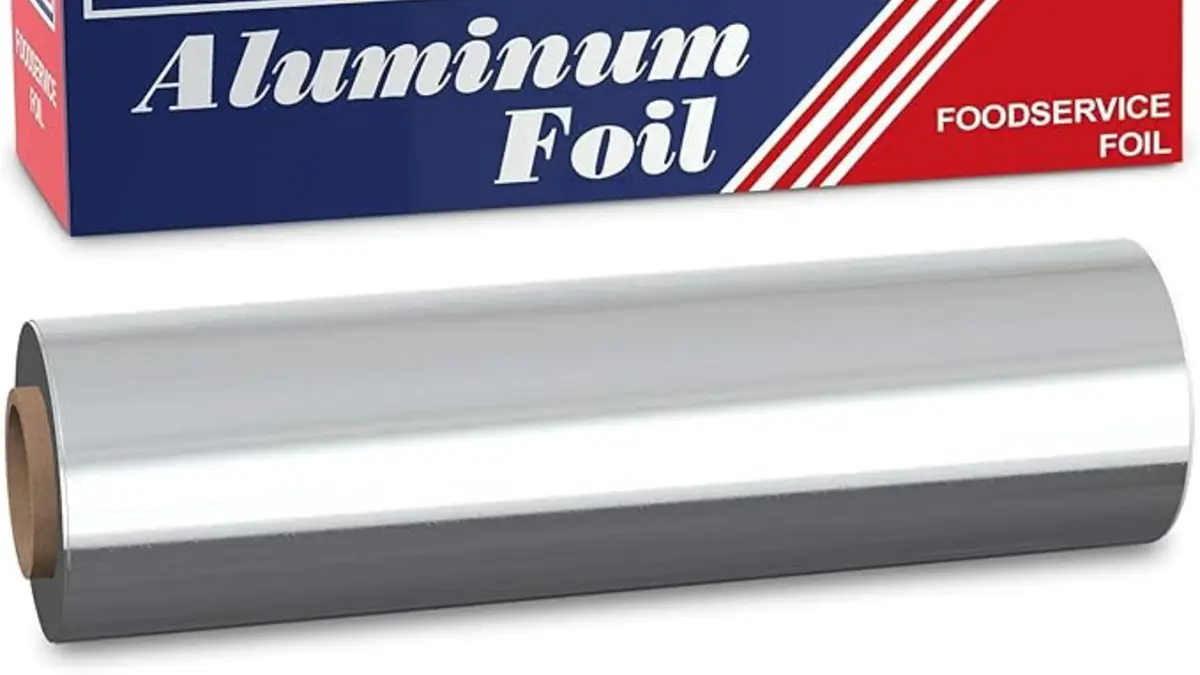
Heavy-duty kitchen foil. A 75-foot roll costs $8. Get the thickest version available—restaurant grade if possible.
Aluminum foil seems too ordinary for survival. But survival experts have identified 23+ emergency uses for it. It reflects heat, blocks wind, shapes to any form, and conducts electricity. It’s waterproof, moldable, and lightweight.
Build solar ovens that reach 200°F. Create heat reflectors behind fires to double warmth. Fashion cooking pots and water containers. Make fishing lures that actually catch fish. Signal aircraft with the reflective surface. Boost radio and WiFi signals by shaping parabolic reflectors. Protect tinder and matches from moisture.
Double or triple layer for strength. Shiny side out for maximum heat reflection. Dull side out to reduce visibility. You can resharpen scissors and knives by cutting through layers of foil. Surprisingly, aluminum foil can boost WiFi and radio signals by up to 50% when shaped into a parabolic reflector.
9. Tampons
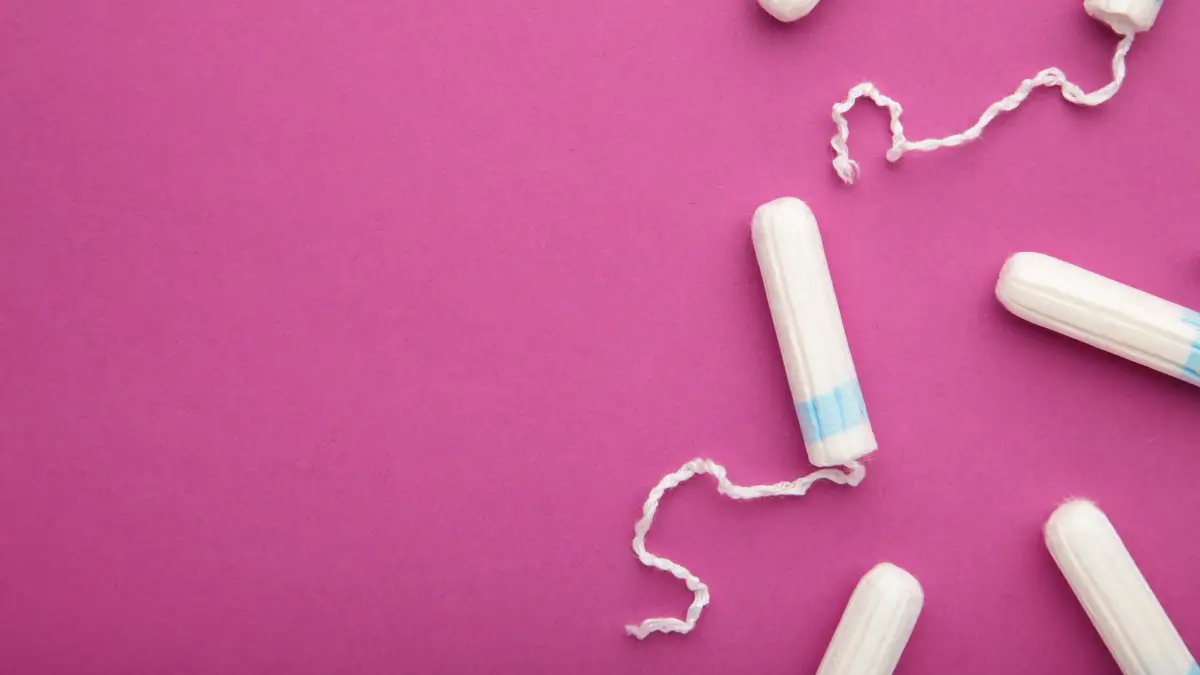
Regular unscented tampons from any pharmacy cost $8-15 per box. Each one is individually wrapped and sterile.
Tampons are NOT good for traumatic bleeding despite internet myths. Medical professionals strongly discourage this use. But tampons have legitimate survival applications that actually work.
The cotton makes excellent fire tinder—pull one apart and it lights with a single spark. They work as crude water pre-filters for sediment. The cotton can filter debris before boiling or purifying. Some survivalists use them for nosebleeds (a legitimate use since they’re designed for absorption). The string works as cordage in desperation.
Buy unscented only—fragrances attract animals and irritate wounds. Pull the cotton apart completely for fire starting. One tampon provides 5-7 minutes of burn time. Despite internet claims, tampons should NOT be used for serious wound care—proper gauze and pressure are required.
10. Sewing Awls
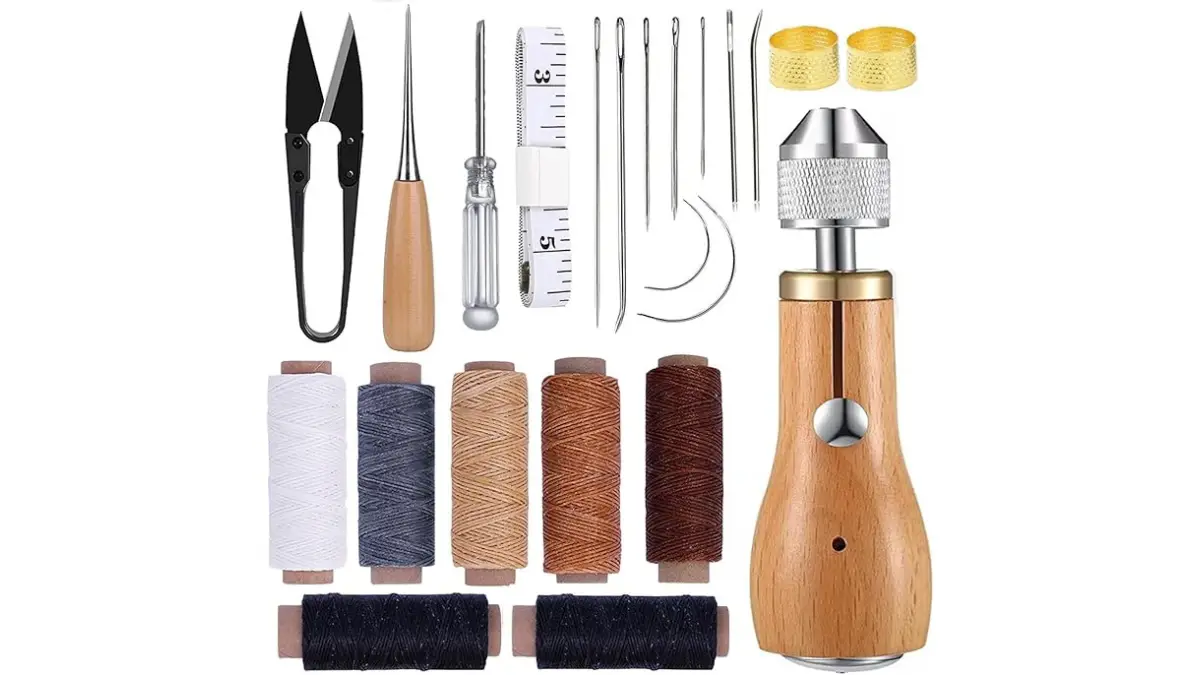
Sewing awl is a compact repair tool built for tough jobs. It features a sturdy, pointed needle paired with heavy-duty thread, allowing you to pierce and stitch thick materials like leather, canvas, or denim with ease.
Small enough to fit in a pocket or pack, it usually includes its own thread storage, making it ready to use anywhere. Perfect for outdoor enthusiasts and DIY repairs, it can quickly fix ripped gear—whether it’s a torn backpack strap, a hole in a tent, or damaged work boots—restoring strength and extending the life of your essentials.
11. Silica Gel Packets
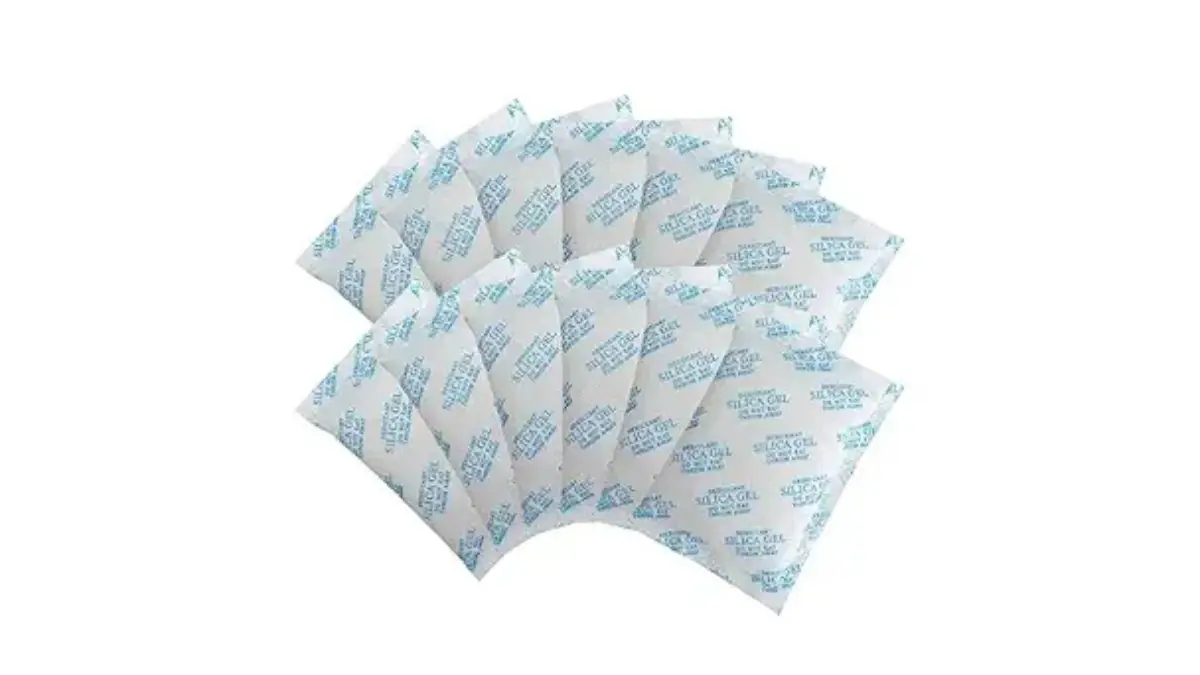
Silica gel packets are lightweight pouches filled with beads that absorb excess moisture from the air, keeping items dry and protected. While many people first see them in shoeboxes or packaged goods, they’re widely available in bulk and can be reused by drying them out in an oven or over gentle heat.
Affordable and versatile, these little packets are a simple way to combat humidity. Slip them into storage boxes, camera bags, ammo cans, or tool kits to ward off rust, mold, and damp damage. They’re especially handy for long-term storage of clothing, electronics, and important gear.

